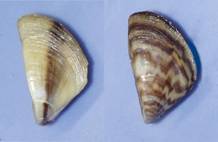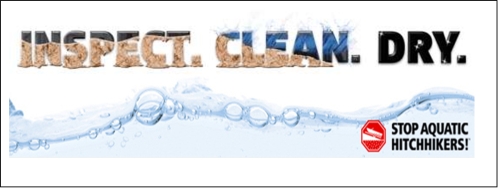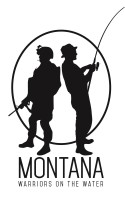Fishing Information
Lakes and Ramps
NEW UPDATED LINKS!
Click on the links below to get up to date information about water levels, flow, maps, and recreational sites around Montana and surrounding Rocky Mountain region spanning from Montana to Texas!
To search by Region and/or by specific body of water, Click Here.
To search BOR water level and lake info, click here.
|
Recreation & Boat Ramps
|
|||
Montana Streamflow Data
Fort Peck Reservoir Water Elevation and CFS Inflow and Discharge Data
http://www.nwd-mr.usace.army.mil/rcc/nwo/dailybull.pdf
Fort Peck Boat Ramp Information
http://www.nwd-mr.usace.army.mil/rcc/reports/ftpkramps.html
Boat Ramp Information for Big Horn Lake (Yellowtail Dam), Canyon Ferry, Clark Canyon, Tiber Dam (Lake Ewell)
http://www.usbr.gov/gp/boat/index.html
Flathead Lake Boat Ramp Information
http://www.mackdays.com/maps/access_sites/access.php
Idaho Streamflow Data – For Steelhead and Salmon Fishermen in Idaho follow the link below
http://www.nwd-wc.usace.army.mil/nww/rreports.htm
Fishing Links
Aquatic Nuisance
FWP AIS Inspection Stations Open Across Montana
Montana Fish, Wildlife & Parks officials said today that aquatic
invasive species inspection stations and roving inspection crews are in
operation at key border crossing sites, along major highways, and on
heavily used water bodies.
By law boaters must stop at AIS watercraft inspection stations for a
brief interview and inspection. Already this month, two boats stopped at
inspection stations were found to be fouled by zebra mussels, and
another contaminated boat was found by an alert private citizen.
Boaters are urged to inspect, clean and dry boats, trailers and gear
exposed to the water to ensure they don't carry organisms from one water
body to another, whether they plan to travel an inspection route or not.
"At the inspection stations, boats and trailers will be carefully
inspected and boaters can learn more about how to identify invasive
species and prevent their spread from one water body to the next," said
Allison Begley, FWP's AIS coordinator.
The most likely aquatic invasive species threats to Montana waters
include quagga and zebra mussels, New Zealand mudsnails, and Eurasian
watermilfoil.
Inspection stations and roving crews will be operating throughout the
boating season in these locations:
Clearwater Junction rest area
Eureka Hwy 37 West bound
Ronan Hwy 93 North bound rest area
Culbertson Hwy 2 West bound rest area
Wibaux I-94 west bound
Dena Mora I-90 East bound rest area
Dillon I-15 North bound
Hardin I-90 rest area
Conrad I-15 north and southbound
Shelby Hwy 2 westbound
Fort Peck Hwy 24 eastbound
Troy Hwy 2 eastbound
Clark Fork River drainage
Missouri River drainage
Swan Area
Madison River drainage
Bitterroot River drainage
Roving crews will also work at fishing tournaments and other boating
events.
Montana's AIS laws were recently beefed up by the 2013 Legislature in a
bill carried by Rep. Mike Cuffe (R-Eureka). One change established a
means to create a statewide AIS management area. FWP will develop
management area rules over the next few months, Begley said.
For more on aquatic invasive species, go to FWP's invasive species
website at fwp.mt.gov and click on Aquatic Invasive Species on the
Fishing page.
What you can do to help:
- Ensure that you are not part of the problem
- Drain all water from your watercraft before leaving the immediate area of the lake
- Remove all weeds, mud or attached organisms from the boat and trailer
- Always dispose unwanted bait in the trash, never bring live bait into Montana without authorization
- Wash the exterior of your boat and trailer, hot-high pressure water is best
- Rinse and clean live wells, use hot soapy water or a weak bleach solution
- Allow boat to dry in between trips to different water bodies; ideally for 5 days
- Never move live fish, aquatic invertebrates or plants from one body of water to another without Fish, Wildlife and Parks authorization. It is unlawful to release any live aquarium or bait fish
- Report any potential sightings of zebra or quagga mussels (see description below) immediately to the Fish, Wildlife and Parks ANS Coordinator (406-444-2449), if possible, collect a sample, place it in a jar or zip-loc bag and note specific location and date
- Spread the word; tell your neighbors and friends about the importance of taking steps to prevent the spread of Aquatic Nuisance Species
- For further questions call the ANS Coordinator at 406-444-2449.
How to identify Quagga or Zebra mussels
- Quagga and zebra mussels are similar in appearance
- Adults look like a small clam with a D-shaped shell
- Usually have alternating dark and light stripes, but these may not be present
- About the size of your fingernail, although can be up to 1-2 inches
- Small juveniles, which have just recently attached to a surface, look like black pepper and feel like sandpaper.

Quagga mussel on left, Zebra mussel on right, photo from USGS.
For more information, click on the following link http://fwp.mt.gov/fishing/guide/AIS.html



